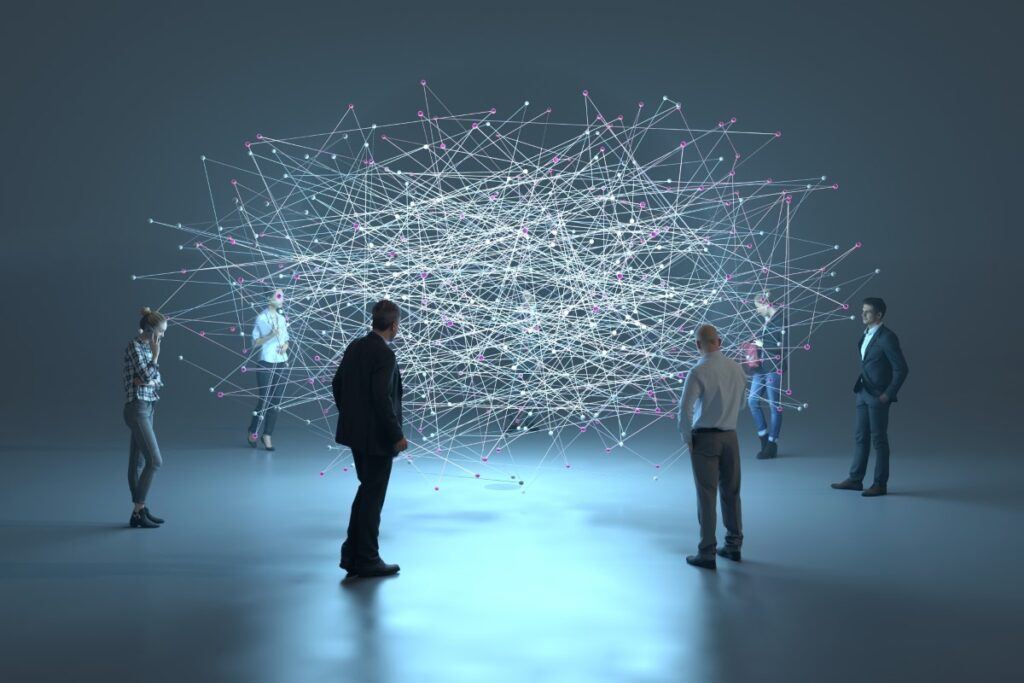Why the partnership of technology and people bring more than one benefit
As defined by Professor Leigh Thompson of the Kellogg School of Management, “a team is a group of people who are interdependent with respect to information, resources, knowledge and skills and who seek to combine their efforts to achieve a common goal.” But that is perhaps a somewhat outdated definition these days. How about instead defining a team as “a group of individuals (human or non-human) working together to achieve their goal”?
In this age of AI (Artificial Intelligence) and the virtual digital assistant, this is more appropriate, I feel. Which, simply put, means that the outcomes from any collaborative (human and non-human) partnership or team will be a productive combination of human outcomes and non-human outcomes.
Technology isn’t just a tool anymore
It is no longer a case of ignoring the ‘tech’ component of your team. As technology continues to evolve so rapidly, it is no longer an ‘add-on’ but instead has now become a true team member of value.
Here is just one example:
An engineering lab had several centrifugal pumps in multiple locations that were used for a wide variety of testing.
In the past, when someone wanted to use one or more of the pumps at one location, they would load up their vehicle with their test specimens and drive 25 minutes. Upon arrival they often would find that the pumps were already being used by somebody else. Often due to project priority, the visitor would have to turn around and wait until the pumps were available. This became very frustrating for individuals whose projects were a lower priority as this was a consistent time waste.
Companies use LiquidPlanner’s technology to scale their work
A group of engineers and lab staff were able to utilize LiquidPlanner to help solve the problem they encountered. The effort to make this improvement was minimal and only required a little know-how and communication.
Approval was obtained to create a total of 5 virtual members to schedule testing of the pumps, the correct pump(s) must be assigned to the work order for which they will be used. Users are now able to see if a pump is available before making a trip. This also helps with planning large projects that may tie up resources for a long period of time. When a virtual user is created and the hours remaining are estimated accurately, using the resource workload tab allows the user to view future availability.
Gary Matuszak, Global and US Chair of Technology, Media and Telecommunications, KPMG declared “Tech industry CEOs see the benefits of digital labor1 augmenting workforce capabilities and enabling new ways of doing business to add customer value, improve efficiencies and reduce cost. They see the combination of digital and human labor as an effective way to execute their strategy.”
Using AI as a partnership opportunity
In ‘Collaborative Intelligence: Humans and AI Are Joining Forces2’ by H. James Wilson and Paul R. Daugherty, Harvard Business Review, the authors comment that “Machines Assisting Humans: Smart machines are helping humans expand their abilities in three ways:
- Amplify our cognitive strengths
- Interact with customers and employees to free us for higher-level tasks
- Embody human skills to extend our physical capabilities
AI does a lot more than just simple problem solving but offers up a partnership that can be super creative and productive.
They conclude their article with a warning that we should all heed “the lesson is clear: Organizations that use machines merely to displace workers through automation will miss the full potential of AI. Such a strategy is misguided from the get-go. Tomorrow’s leaders will instead be those that embrace collaborative intelligence, transforming their operations, their markets, their industries, and—no less important—their workforces.”
In a previous blog] I proposed the idea of the ‘digital dance’. My idea of the ‘digital dance’ is the process that a human connects, aligns, and partners with technology to produce an enhanced deliverable or outcome, a human and non-human outcome. I argued that smart managers should grasp this amazing opportunity and join the ‘digital dance’ to achieve a new level of successful outcomes for their businesses and teams.
This is further echoed in the article ‘Intelligent Collaboration for Predictive Insight & Competitive Advantage’ by James Arrow. He suggests that “intelligent collaboration and risk management strategies require us, among other things, to perceive relationships, learn quickly and act upon relevant information. Modern, online collaborative software platforms (such a LiquidPlanner) are perfect for realizing this strategy.”
Whatever you do in the (near) future and beyond, always consider the ‘new’ definition of a team. A team where it is a group of individuals (human or non-human) working together to achieve a common goal.
Plan your digital dance steps and take full advantage of the available partnership between technology and humans.
It is the future.
 About the Author
About the Author
Keynote speaker and coach, Peter Taylor is the author of the number 1 bestselling project management book ‘The Lazy Project Manager’, along with many other books on Project Management, PMO development, Executive Sponsorship, Transformation Leadership, and Speaking Skills. He has built and led some of the largest PMOs in the world with organizations such as Siemens, IBM, UKG, and now Ceridian, where he is the VP Global PMO. He has also delivered over 500 lectures around the world in over 25 countries and has been described as ‘perhaps the most entertaining and inspiring speaker in the project management world today’.
Article Footnotes
- Digital labor represents emergent forms of labor characterized by the production of value through interaction with information and communication technologies such as digital platforms or artificial intelligence.
- https://hbr.org/2018/07/collaborative-intelligence-humans-and-ai-are-joining-forces








